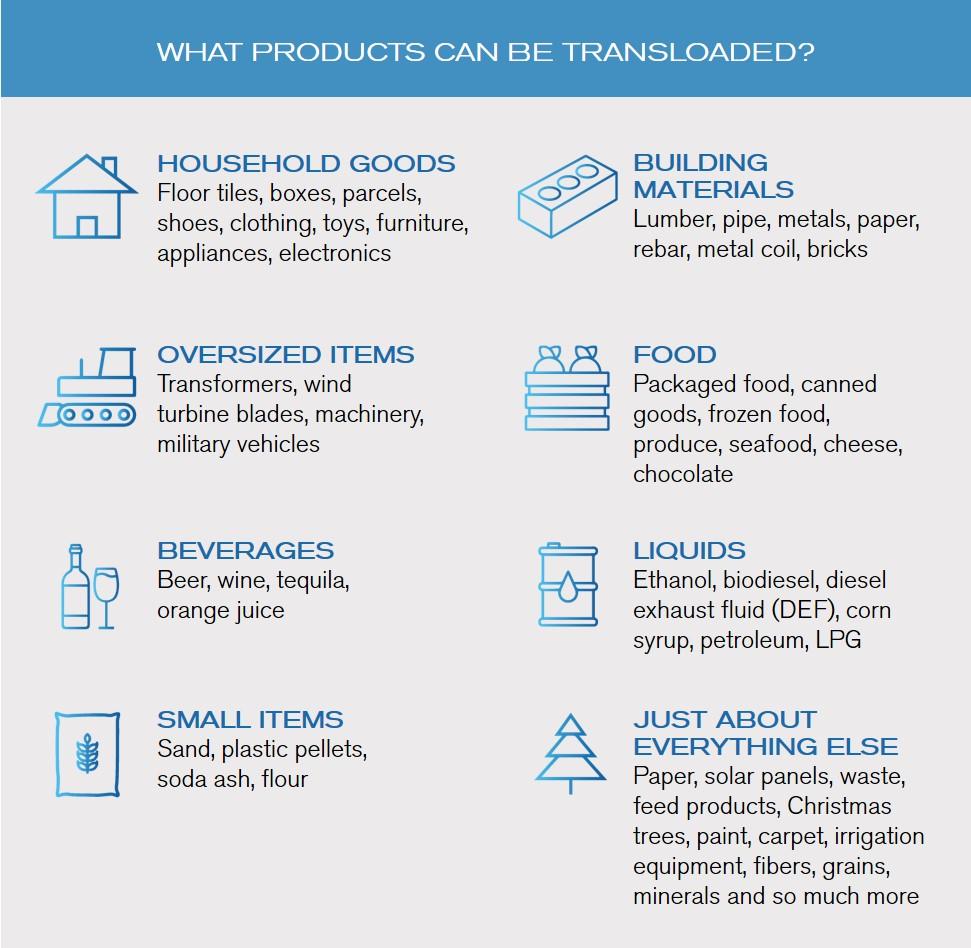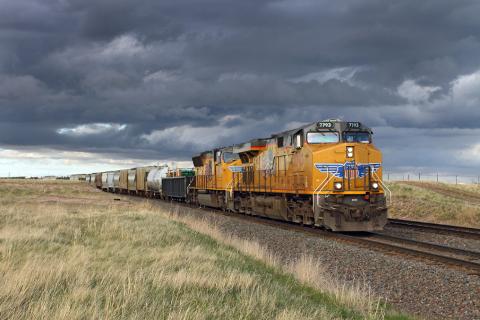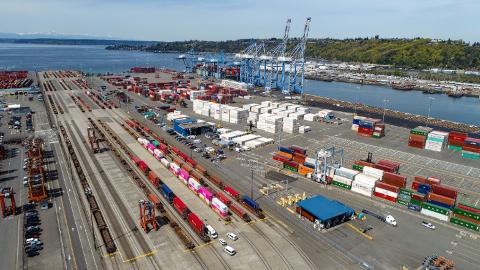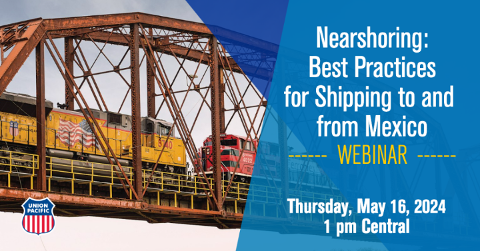Transloading is the process of moving goods between transportation modes -- literally unloading freight from one container, rail car, etc. into another. But the loading portion isn't nearly as important as what it allows shippers to do, which is ship their products by truck or train seamlessly to optimize the efficiency and costs of their supply chain.
What Is Transloading?
When a provider transloads products, freight is transferred between trucks and trains. For example, a forklift may transfer palletized goods from a truck to a rail car, or a crane may lift heavy products, like steel beams, off a rail car and place them on a flatbed truck. Simply put, whatever you’re shipping, products are unloaded from trucks onto trains or vice versa. Transloading gives shippers the best of both worlds: economical rail transport and flexible over-the-road trucking.
How does transloading work?
Depending on whether your origin or destination has rail service, transloading can happen a few different ways, but here’s a basic example:
- Products are loaded onto a truck.
- The truck transports the products to a transload facility.
- The transload facility transfers products to a rail car.
- The product type determines how it is transferred (e.g., pump, crane or forklift) and to which type of rail car (e.g., tank car, flat car or boxcar).
- If needed, products are transferred back to trucks for final delivery.
How can transloading improve your supply chain?
For many, it makes perfect sense to shift their shipping solution from one mode to two with the help of transloading. Here’s why:
- No need to invest in track, warehouses for storage or transloading equipment
No track? No problem. Typically, shipping by rail is a more cost-effective shipping option. However, many shippers — or receivers — don’t have tracks at their door. With transloading, it doesn’t matter: all shippers and receivers can benefit from rail because freight can be transloaded to trucks for first- or last-mile delivery. And when you transload, forget about renting or investing in transloading equipment and warehouses for storage at your site. The transload facilities store and transfer your goods for you, saving you time and valuable transportation dollars.
- Increase your market reach
With a freight transloading solution in place, you have access to an expansive rail network, allowing you to ship more affordably and reach a vast number of major markets throughout the U.S., Mexico and Canada. Depending on where you are shipping, you may also utilize transload facilities in a wide variety of locations. Some logistics companies, like Loup Logistics, have access to a network of transload facilities across North America and can connect you with transloaders, no matter where you’re shipping. They have 95 facilities in Mexico alone, so it’s safe to say wherever your business is, a transload facility isn’t far away.
- Ship across the border seamlessly
Wherever you do business, it’s safe to say a transload facility isn’t far away – even if you are looking to expand into Mexico. Loup Logistics has 95 transload facilities in Mexico alone. These facilities are outfitted with warehousing capacity and transloading equipment to bridge the gap between production sites and getting products prepped to travel by train to U.S. or Canadian ports.
- Rely on shipping experts
If you aren’t 100% confident in your shipping know-how, don’t fret. Logistics companies with networks of transloading providers have already vetted those providers to provide safe, high-quality services to streamline your supply chain. You don’t have to be a shipping expert. You can rely on the expertise of seasoned logistics professionals.
- Ship more, spend less
A single rail car can carry the same amount of product as three to four truckloads — and trains are three to four times more fuel efficient than trucks. These efficiencies are passed to your transportation costs, allowing you to ship heavier loads farther while spending less.
- Adapt as your business grows
Capacity is rarely an issue for railroads, so rail can accommodate even your largest loads — and will be ready to handle more as you expand your business.
What Products Can Be Transloaded?

Just about any product can be transloaded between trains and trucks – and back again. From lumber and metals to liquids, frozen foods and heavy machinery, transloading is a great shipping option for all kinds of goods.
Household Goods
- Floor tiles
- Boxes
- Parcels
- Shoes
- Clothing
- Toys
- Furniture
- Appliances
- Electronics
Building Materials
- Lumber
- Pipe
- Metals
- Rebar
- Metal coil
- Bricks
Oversized Items
- Transformers
- Wind turbine blades
- Machinery
- Military Vehicles
Food
- Packaged food
- Canned goods
- Frozen food
- Produce
- Seafood
- Cheese
- Chocolate
Beverages
- Beer
- Wine
- Tequila
- Orange Juice
Liquids
- Ethanol
- Biodiesel
- Diesel Exhaust Fluid (DEF)
- Corn Syrup
- Petroleum
- LPG
Small Items
- Sand
- Plastic pellets
- Soda Ash
- Flour
Just About Everything Else
- Paper
- Solar panels
- Waste
- Feed Products
- Christmas trees
- Paint
- Carpet
- Irrigation equipment
- Fibers
- Grains
- Minerals
- And so much more
How Are Products Transloaded?

The way a product is transloaded depends on the product type. Transloading equipment includes forklifts, conveyors, pumps, cranes and loaders.
Forklift
- For products like lumber, paper and palletized goods
Conveyor
- For bulk products like sand, soda ash, grains, flour and sugar
Pump/Pneumatic Transfer
- For products like plastic pellets and liquids
Crane
- For large, heavy products like steel beams, rebar, pipe and wind components
Front-End Loader
- For products like rock, salt, and other minerals and aggregates
Is Transloading For You?
Could your business benefit from the best of rail and over-the-road transportation? Answer a few quick questions and a shipping expert will be in touch to talk about your options.
Related Articles:
- What Products Can Be Transloaded?
- How Are Products Transloaded?
- Inside Look: How Transloading Works
- Intermodal vs. Transloading
- Rail 101 FAQs









